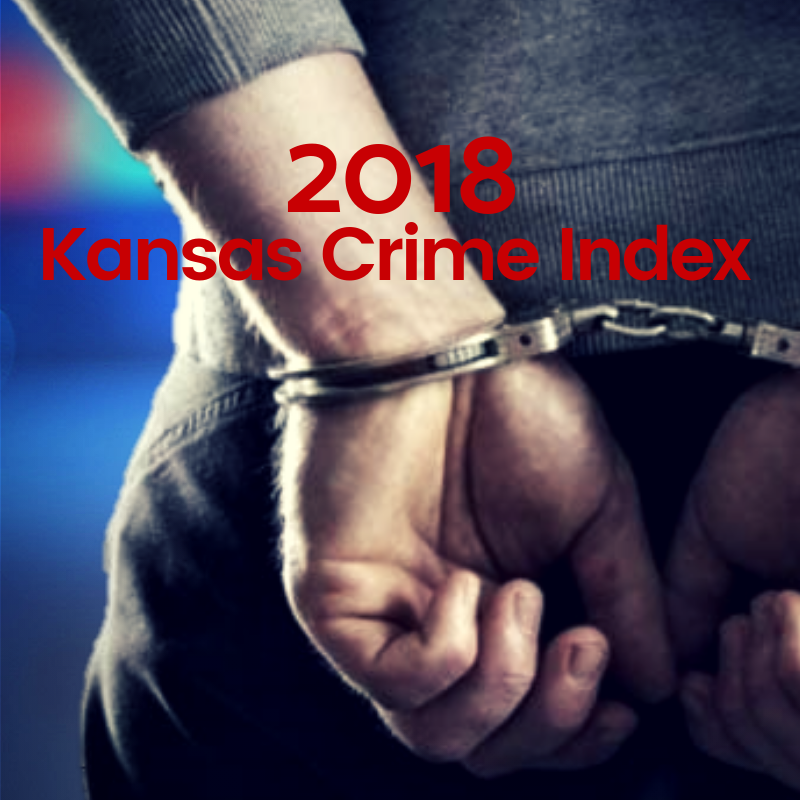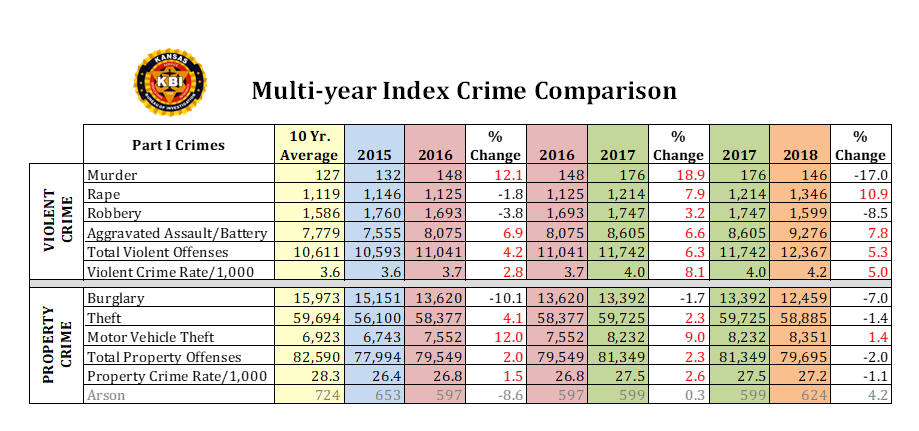KBI releases Kansas crime statistics for 2018

Posted:
Topeka – The Kansas Bureau of Investigation (KBI) has released the 2018 Kansas Crime Index Report. The report compiles crime statistics reported to the KBI by state and local law enforcement agencies across Kansas.
Violent Crime Analysis
The 2018 Kansas Crime Index Report indicated that violent crime in Kansas continues to trend upward. In 2018, 12,367 violent crimes were reported in Kansas. This represents an overall increase of 5.3% in the violent crime categories of murder, rape, robbery, and aggravated assault/battery. The violent crime rate is currently 16.5% above the 10-year average.
In 2018, contributing to the overall violent crime increase was an 10.9% increase in reported rapes and a 7.8% increase in aggravated assaults, compared to 2017 numbers. While these increases are concerning, the report suggests the rise in crime that Kansas has experienced since 2014 may be starting to slow. For instance, murder and robbery declined in 2018, compared to the prior year. Across the state 146 murders occurred, significantly fewer than the 176 murders in 2017, when the murder rate reached the highest in a decade. Robberies also decreased by 8.5% in 2018.
Property Crime Analysis
According to the 2018 crime report, total property crime offenses in Kansas declined by 2.0%. Both burglary and theft decreased compared to 2017. Motor vehicle theft, by contrast, increased for the fourth year in a row.








